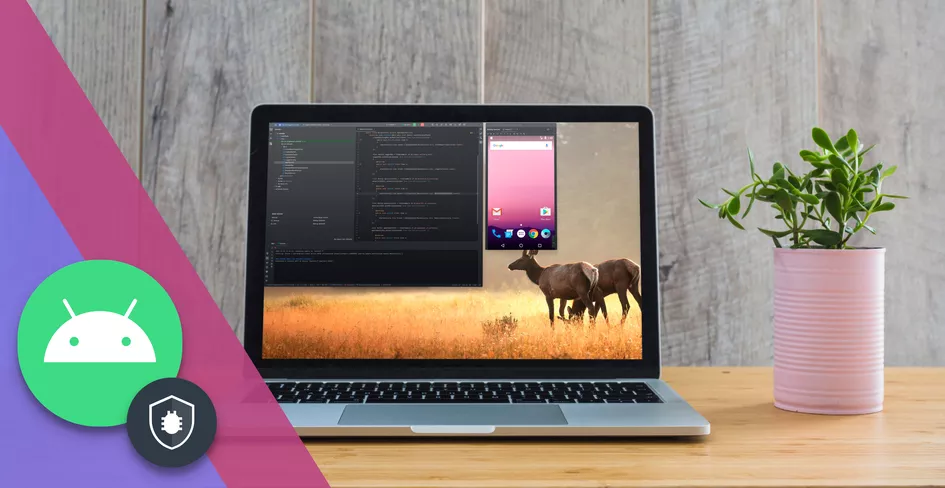For Android developers working on a Mac, using an Android emulator Mac that supports Apple Silicon is essential for achieving smooth performance. Choosing the right emulator version compatible with the ARM architecture and configuring it properly can significantly improve speed and reliability during development.
What are Android Emulators?
An Android emulator is computer software that replicates the hardware and software of an Android smartphone or tablet. The Android operating system can be used on another platform, such as Windows, macOS, or iOS. Emulators mimic the action, function, and user interface of Android devices, which makes them a vital testing device for mobile applications in almost the same configuration as actual devices.
Emulators accomplish this by simulating an environment that is virtual Android environment with identical RAM, CPU, storage, and sensors, like GPS or accelerometers. Developers can observe how their application will be used in real life across various hardware configurations, operating systems, and display resolutions.
Apple Silicon Architecture
Apple Silicon refers to the Mac and iPad processor line starting with the M1 in 2020. Apple’s adoption of such chips moves away from Intel’s x86 platform and towards a proprietary ARM-based platform.
- ARM-Based Architecture: Apple Silicon is designed around the 64-bit ARM instruction set. ARM designs are renowned for doing more work for less power. Apple has taken the ARM design and built high-performance chips capable of professional workloads with long battery life and low heat generation.
- System on a Chip (SoC): Every Apple Silicon processor is a system on a chip. That is, the CPU, GPU, Neural Engine, memory controller, and so forth are all integrated into one piece of silicon. This has faster communication between components of the chip and lower power usage.
- CPU Architecture: Apple uses a hybrid CPU architecture, which combines high-performance and high-efficiency cores. This enables the system to dynamically balance power and performance based on your activity.
- Apple GPU: The graphics processing unit (GPU) of Apple Silicon is designed to be close to the SoC of Apple. It supports fast graphics performance for video editing, gaming, and 3D design, and is power-efficient. Apple’s GPU is optimized for use with Metal, Apple’s Metal and compute API.
- Neural Engine: Apple builds a Neural Engine into every M-series CPU, with 16 special-purpose cores dedicated solely to machine learning workloads. The chip enables the system to complete activities such as voice recognition, picture and video processing, and predictive input much faster than if they were performed on the CPU or GPU. It is the foundation of features such as Live Text, Face ID, and real-time picture processing.
- Unified Memory Architecture: Apple’s unified memory architecture (UMA) enables all components of the chip, CPU, GPU, and Neural Engine to have access to a common memory pool. This speeds up data access and efficiency. Programs gain quicker performance, and developers can code more optimized software since everything accesses the same high-speed memory.
- Media Engine: Media Engine is a specialized hardware block within Apple Silicon processors that does the video and audio encoding and decoding. It takes care of encoding and decoding for codecs like H.264, HEVC, ProRes, and AV1. Dedicated processing makes playing video back, editing, and streaming effectively carried out without congesting the main CPU or GPU, hence effectively boosting media workflows.
- Security and I/O Integration: Apple Silicon has a Secure Enclave, which is a dedicated subsystem employed to process sensitive data. This renders the chip very secure, supporting features such as Touch ID and Secure Boot. The chips also have features for enhanced connectivity.
- Chip Evolution: The M1 chip, released in 2020, unveiled the Apple Silicon platform with astounding performance and efficiency. The M2 chip has taken this further with quicker CPU and GPU performance and more memory bandwidth. The M3 series, on a 3-nanometer process, added more power efficiency and more professional and high-performance use cases as supported. Every subsequent generation makes the architecture better and supports more professional and high-performance use cases.
Tips to Optimize Android Emulator Performance on Apple Silicon
The following are some tips for optimizing emulator performance on Apple Silicon:
Opt for Native ARM Emulators: Apple Silicon is based on ARM architecture, and thus, system images and emulators that are built for ARM will be faster to execute than those executing on x86-built ones. Native ARM emulators do not have translation layers like Rosetta, and thus they will execute faster and consume fewer CPU resources. Android Studio, as an example, offers ARM64 system images that can execute natively on Apple Silicon with no performance penalty.
- Avoid x86 Emulation: Operation of x86-based emulators on Apple Silicon needs real-time instruction translation, which has considerable overhead. This tends to cause slower performance, more memory use, and longer launch times. Where feasible, use ARM64 equivalents, as they make full use of the Apple Silicon architecture and steer clear of the inefficiencies of emulating a foreign instruction set.
- Enable Hardware Acceleration Features: Apple Silicon enables hardware acceleration by the Apple Virtualization Framework and associated technologies. Emulators specifically designed to utilize them, like Android Emulator with graphics hardware acceleration, or virtual machines in UTM with virtualization on, will enjoy improved graphics rendering, more engaging experiences, and less CPU usage. Hardware-accelerated graphics, supported, can be enabled in emulator options.
- Keep Emulators and Tools Up-to-date: Frequent updates to toolkits like Android Studio, Xcode, or virtualization software include Apple Silicon performance improvements. They also introduce native ARM support, improved memory management, and improved graphics rendering. Keeping all tools updated is necessary to support optimal performance and compatibility.
- Use Lightweight Alternatives When Appropriate: For more basic tasks like automated testing or background processing, use headless emulators or CLI-based simulators. These bypass the overhead of complete GUI environments and can execute more effectively in scripting pipelines or CI environments. Lightweight software minimizes load and keeps the system responsive during multitasking.
Android Emulator supporting Apple Silicon architecture
With Apple’s shift to M-series processors, Android emulators for Mac have been updated to run natively on ARM64 architecture, delivering better speed and compatibility on M1, M2, and M3 Macs. For developers seeking reliable Android emulator Mac options that leverage this architecture, cloud-based solutions offer significant advantages.
One such platform is LambdaTest, a GenAI-native test execution platform that enables you to perform both manual and automated tests at scale across 3,000+ browser and OS combinations and over 10,000 real devices. This makes it an excellent choice for Mac developers working with Apple Silicon who need access to diverse Android environments without the overhead of local installations.
LambdaTest’s interface is intuitive, and its rapid performance ensures that you can easily verify app functionality. It also features a built-in mobile-friendly test tool that lets you assess the responsiveness and usability of your web apps across numerous devices, helping you ensure a seamless user experience on mobile platforms.
Features:
- Access to Android devices and emulators directly through a browser, no setup required.
- Support for manual and automated testing frameworks like Appium.
- CI/CD integrations with popular tools such as GitHub Actions and Jenkins.
- Native ARM64 support optimized for Apple Silicon Macs.
Android Emulator (Android Studio): The officially Google-endorsed Android Emulator natively runs ARM64 on Apple Silicon and is thoroughly integrated with Android Studio. It offers high-performance, accurate simulation, and direct access to advanced debugging and profiling features. Hardware-accelerated virtualization is handled by Apple’s Hypervisor framework, so it is the first choice for developers testing new Android releases.
Features:
- Integrated with Android Studio for testing and debugging.
- Uses Apple’s Hypervisor, A framework for fast virtualization.
- Quick Boot and snapshotting functionality to provide fast testing cycles.
Genymotion (ARM Beta / Cloud)- Genymotion has just released a native beta build for Apple Silicon alongside a cloud-based variant. It is special for device testing for its extensive simulation of hardware setups, sensor inputs, and device profiles. Emulators can be run locally or remotely, ideally suited for scaling QA or test processes with changing configurations.
Features:
- Apple Silicon native beta with ARM-based support for Android images.
- Pre-configured device profiles for Pixel, Samsung, etc.
- Hardware simulation of GPS, battery, camera, and sensors.
MuMuPlayer Pro (Apple Silicon native)- MuMuPlayer Pro is designed with gaming on Apple Silicon Macs in mind, optimized with Android 12 functionality and low system demands. It boots quickly, provides seamless play, and provides strong multi-instance and control-mapping features, making it one of the few emulators with native M‑series support aside from official releases.
Features:
- Tailored from scratch for Apple Silicon on Android 12 engine.
- Support for playing or testing multiple applications.
- High-end keyboard/mouse/gamepad mapping using cloud mapping.
- Simulated device model and performance customizations.
ARChon (Chrome Extension Based)– ARChon runs Android apps natively within Chrome or Chromium on any Mac without the need for emulator installation. It enables light emulation via the browser, useful for quick testing or hobby usage. Perhaps not all applications would work optimally, but it is useful for light deployment or demo scenarios
Features:
- Runs Android apps within Google Chrome as ChromeOS-like windows.
- No other installation beyond a Chrome extension is needed.
- Respects several instances of an app with APK loading.
- Ideal for developers who need simple browser-based app testing.
KO Player- Even though KO Player does not yet natively support Apple Silicon, it is still worthwhile for Intel Macs and will likely have ARM support in the future. It’s the user-preferred option for a lightweight emulator with OpenGL acceleration and few developer features like script recording or root access testing.
Features:
- Very lightweight and easy to install for gaming or general app usage.
- Supports hardware acceleration and OpenGL.
- Macro and scripting for repeated input.
- APK sideloading and root options.
Conclusion
In conclusion, Android emulators on Apple Silicon perform well optimized with ARM64 system images, hardware acceleration, and newer tools. The latest Android Studio, resource allocation, and use of ARM-native images are for optimal performance. While most tasks run smoothly, physical devices remain best for intensive testing. Consistent updates from Google continue to improve compatibility and speed. With proper setup, Android development on Apple Silicon is both fast and reliable.



